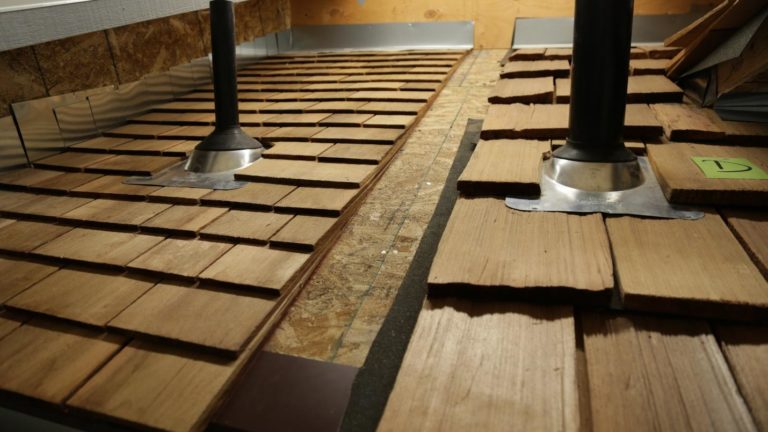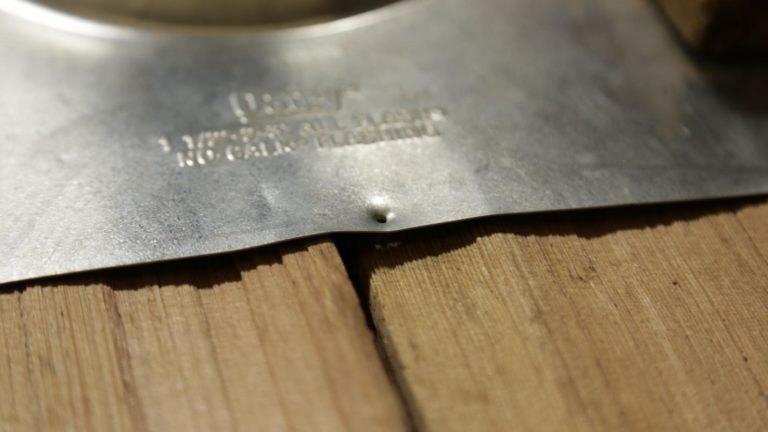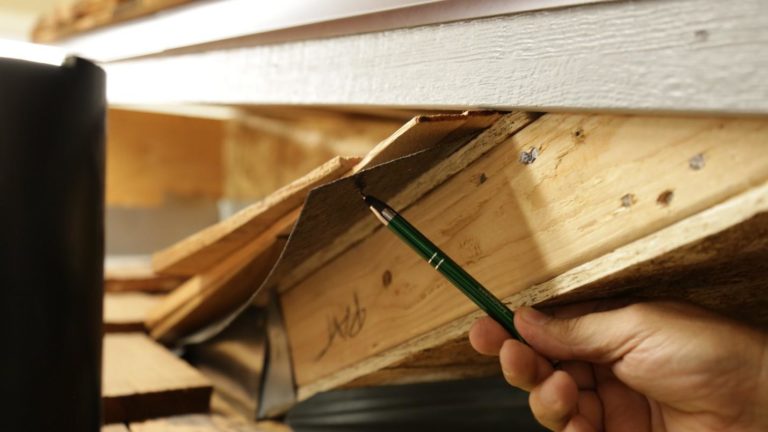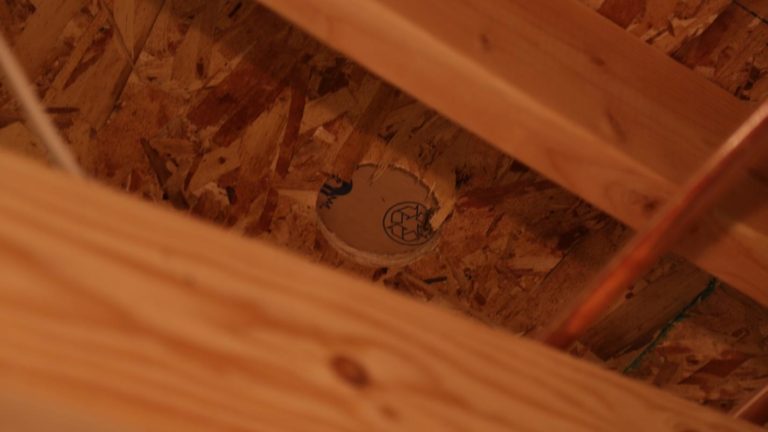STANDARDS OF PRACTICE
The International Standards of Practice for inspecting the roof system is located at www.nachi.org/sop.
MASTERING ROOF INSPECTIONS
To learn about inspecting wood shingles and shake roofs, please visit Mastering Roof Inspections.
Observation

The International Residential Code (IRC) and the Cedar Shake and Shingle Bureau (CSSB) recommend that wood shingles in the field portion of the roof have no underlayment installed due to concerns about moisture, especially condensation.
The exception is where an ice barrier is required at the eave. Another exception is for roofs with slopes of less than 4:12.
Underlayment should be 30# felt for shake roofs.
Observation

Hole in flashing apron over a gap. If the fastener was removed there may be a hole in the gap and through the underlayment causing a leak.
Observation

The IRC states that “no two joints in any three adjacent courses shall be in alignment. On shingled roofs, knots and similar defects should be treated as the edge of a shingle and a 1 ½” side lap maintained. This is because shingles are likely to split first at these defects.
Observation

Excessive overhang at the rake, missing drip edge and exposed underlayment.
Observation

Plumbing vent penetration covered.
FASTENERS
Fastener Types
Both shakes and shingles should be installed with corrosion-resistant fasteners. The Cedar Shake and Shingle Bureau (CSSB) recommends stainless steel or hot-dipped, zinc-coated nails. The CSSB recommends that within 15 miles of salt water… stainless steel fasteners should be used. The CSSB does not recommend the use of electro-galvanized fasteners, and in coastal environments, electro-galvanized fasteners are a defective installation due to their excessively short expected service life. Some types of fasteners may not be of compatible material for use with shakes or shingles that have been chemically pressure-treated. Generally, you wont be able to identify wood roofs that have been pressure treated without documentation, but if you see roofs with stainless steel or hot-dipped galvanized fasteners that appear to be corroding prematurely, it may be that the wood roof has been pressure-treated, and the fasteners are not compatible with the treatment chemicals.
Fastener Schedules
For both shakes and shingles, two fasteners only should be installed, each within 1” of the edge and approximately 1 ½” above the exposure line. Fasteners should never be visible or exposed to weather. Nailing too far in from the edges or too high will encourage cupping or curling. You shouldn’t want to see exposed fasteners... although you will see roofs in which fasteners were installed near the butt of the shake or shingle in an effort to correct cupping or curling. This will not work for long. Over time, the fastener will expand and contract with changes in temperature, it’ll become loose and the shake or shingle will continue to distort.
Distortion happens relatively slowly, but with a lot of force. Enough force to withdraw nails… especially loose nails. Fastener Installation Fasteners should be driven only deep enough that the heads are flush with the surface of the shake or shingle.
Over-driving the fastener will sink the head below the surface, reducing the effective thickness of the wood and consequently… the resistance to uplift from wind. Driving the fastener at an angle can have the same effect.
Under-driving the fastener will also reduce wind resistance since the head will no longer be in contact with the wood.
